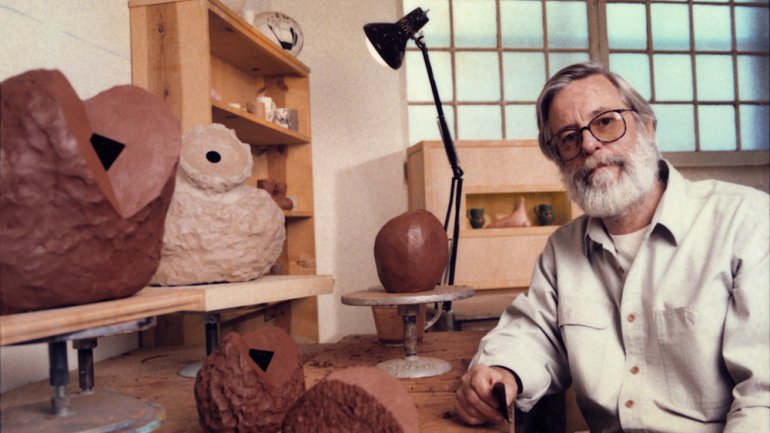Masterful Monograph: Ken Price Sculpture
Ken Price Sculpture: A Retrospective
By Stephanie Barron with Lauren Bergman
Photographs by Fredrik Nilsen
Contributions from Frank O. Gehry, Dave Hickey, Phyllis Tuchman, and Malin Wilson-Powell
While there are quibbles one could have with "Ken Price Sculpture: A Retrospective," currently at the Los Angeles County Museum of Art (both in organization and exhibition design), there can be no argument about the success of the book that accompanies the show.
It is a masterpiece, one of the best artist monographs in years, guided by LACMA senior curator of modern art Stephanie Barron’s fierce professionalism and exceptional scholarship. It not only celebrates Price’s art (the color reproductions in the book are electric), but the text makes a lucid, irrefutable argument for Price’s inclusion in the canon of great American artists. It does this without academic tedium; indeed the constant back-story is highly personal. We learn as much about Price the man as the artist.
Most moving are the accounts from other artists who viewed Price as a kind of saint. In the words of Billy Al Bengston, a surfing buddy of Price’s from his youth: “Kenny is very pure, and very stubborn, a poet and a philosopher. He doesn’t care about fame or money. He really doesn’t.” But Price did both demand and command respect as an artist, and it is perhaps a touch sad that his coronation came so late – the exhibition opened in September, four months after Price died at the age of 77.
One would have expected it to arrive earlier. Price, while a dedicated ceramist who never budged from his core medium, lived his entire life in the fine arts. His first solo show was at Irving Blum’s legendary Ferus Gallery, Los Angeles in 1960, joining a stable of his surfing pals and friends: Billy Al Bengston, Ed Ruscha, and Craig Kauffman among them. He was also introduced to the New York artists Blum showed, including Ellsworth Kelly, Jasper Johns, Roy Lichtenstein, and Andy Warhol (whose first solo exhibition was at Ferus). This was, and remained, Price’s milieu. He showed almost exclusively in leading fine art galleries, was often the cover boy on art magazines, but that final promotion was delayed, due no doubt to the paranoia that John Perreault defined in the 1980s as the “fear of clay” in art academia.
One of several excellent essays in the book is, unsurprisingly, from the critic and fellow Palisades surfer Dave Hickey. He writes:
“One of the fugitive pleasures of surviving into seniordom is sharing the enthusiasm of my younger colleagues who have just discovered the sculpture of Ken Price. They are amazed, even a little petulant, that Price has been kept from them. They invariably attribute their ignorance to the modest size of Price’s work and its sly wit and impudent brand of sensual glamour. It is more likely I think that they have not been wired for modest wit and glamour in the halls of academe. There is no sin in this, but it is hard to deny that Price has been a virtual demigod in the conversation [between artists] of objects since the hedyday of Howdy Doody and rotary dial phones. Since the late 1950’s, Price has fashioned hundreds of modest works, without the feeling of fashioning anything more than two feet high until the twenty-first century. His work which is virtually invisible in academia has always been currency among enthusiasts, who like jazz fans, never read the reviews.”
Hopefully academia will read this book. It manages to balance analytical intelligence with beauty; sensuality with scholarly discipline; and honors Price’s loyalty to his ceramic heart and his ascension to the top rank of American art.
Garth Clark is a writer, historian, and auction specialist in ceramic art.

